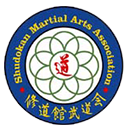The Three Aspects of Training
By Suino, NicklausThis article first appeared in the "SMAA Journal" Volume 16, Issue 2.
Are you a newer martial artist?
What can you expect while training?
There are three aspects to physical training in budo, whether you train for self-defense, physical fitness, or character development. These are as follows: (1) learning new techniques; (2) mastering the techniques you know; and (3) applying the techniques in action. All three aspects are critical if you want to become a really good martial artist.
LEARNING NEW TECHNIQUES
Because you come to a new art with no knowledge, the early part of your martial arts career will be mostly filled with learning new techniques. Typically, you are taught a throw, joint lock, sword cut, or strike—you practice it a bit until you have memorized the pattern—your teacher helps you refine it a bit—and then you are taught another new technique. This is the same whether you study aikido, iaido, judo, jujutsu, karate-do, or kendo. Because students get a lot of attention at this stage, and because of the excitement and interest of constantly learning new things, many students get addicted to learning new techniques. If they don't manage to move past this addiction, they will never become accomplished martial artists; instead, they will become collectors of skills— dilettantes with no deep understanding of their art. In fact, learning new techniques is the smallest part of the career of a true martial arts master.
MASTERING TECHNIQUES
In the traditional martial arts, we don't really believe in the idea that a person can truly “master” a technique or an art. Instead, we believe that becoming great at martial arts is a lifetime's commitment, and that we must constantly revisit the techniques we know to try to deepen our understanding of them. What we mean when we say that the second aspect of physical training is “mastering techniques” is that we constantly practice what we know, always trying to be better. We analyze each part of a technique, figure out what could be done better, practice that part, then put the whole thing back together and try to make it more efficient, more effective, or more beautiful. If we keep at it long enough with an enthusiastic spirit, we can eventually become quite good at our chosen art.
APPLYING TECHNIQUES IN ACTION
Once we have achieved some degree of understanding of our martial arts skills, we can apply them in action. In judo, this is done in randori (free practice), in karate-do we engage in kumite (sparring), in iaido, we simply repeat our forms again and again, seeking to deepen our ability to focus on and execute the detailed form requirements. Through this application, we learn what works well and what needs more work. We can go back to the mastery stage to analyze and perfect skills that don't work well in application, try them out again, and continue this back-and-forth process until we succeed at throwing a challenging partner (or whatever our milestone is at the time). This eventually makes us very capable at self-defense, demonstrating, kumite, or whatever our goal for training may be.
Having good training partners is critical for success in application of techniques. Dojo mates who care about your success can make all the difference. They will apply their strength in the right measure so that you can attempt your technique and determine whether or not it works. They can comment on how your technique looks or feels to them, allowing you to use the feedback to make yourself better. As you improve, they can increase their strength and speed, helping you to refine your skills even more. There are very few better friends than a really good training partner.
Find a New Training Partner with Help from a Martial Arts Industry Association
What if you could meet and befriend martial artists from all around the world?
You’ll find there are multiple martial arts industry associations, but how many are truly worldwide? The Shudokan Martial Arts Association is an international martial arts association that has members in many different countries and close connections to Japan.
Some of our preeminent members include:
- Otsuka Yasuyuki Soke (Headmaster of Meifu-Shinkage Ryu shuriken-jutsu)
- Stephen Fabian Sensei (Hontai Yoshin Ryu jujutsu, Toyama Ryu iaido)
- Iwasaki Hisashi Soke (Headmaster of Kobori Ryu suiei-jutsu)
- Wayne Muromoto (Takeuchi Ryu jujutsu, Muso Jikiden Eishin Ryu iaido)
Is joining such a prestigious community expensive?
No! The SMAA is a small, fraternal organization with a decidedly noncommercial outlook on modern budo and koryu bujutsu. That’s why our two membership options are only $25 and $30 a year. When you become an associate member ($25), you’ll receive an associate member certificate, our quarterly journal, e-mail newsletters, and discounts at SMAA events. Full members ($30) receive all this and the ability to rank and receiving teaching titles.
Immerse yourself in the martial arts community! Join the SMAA today!

